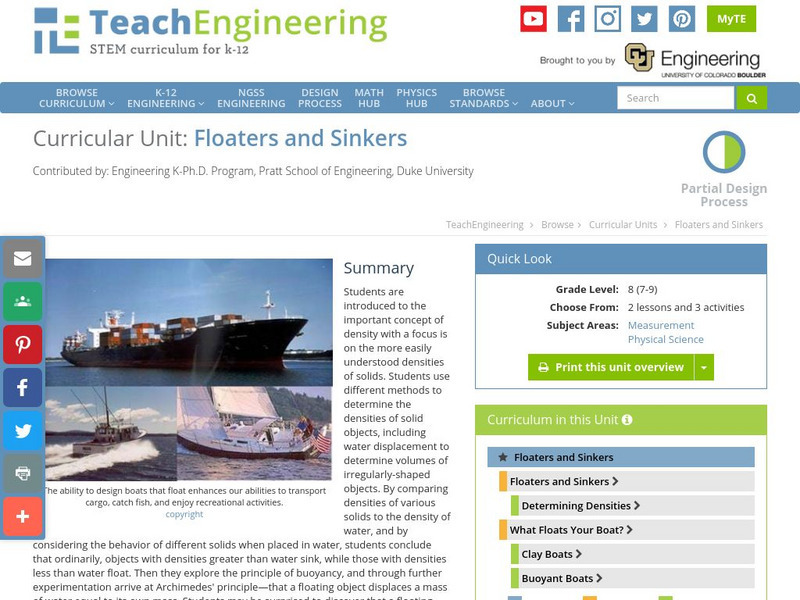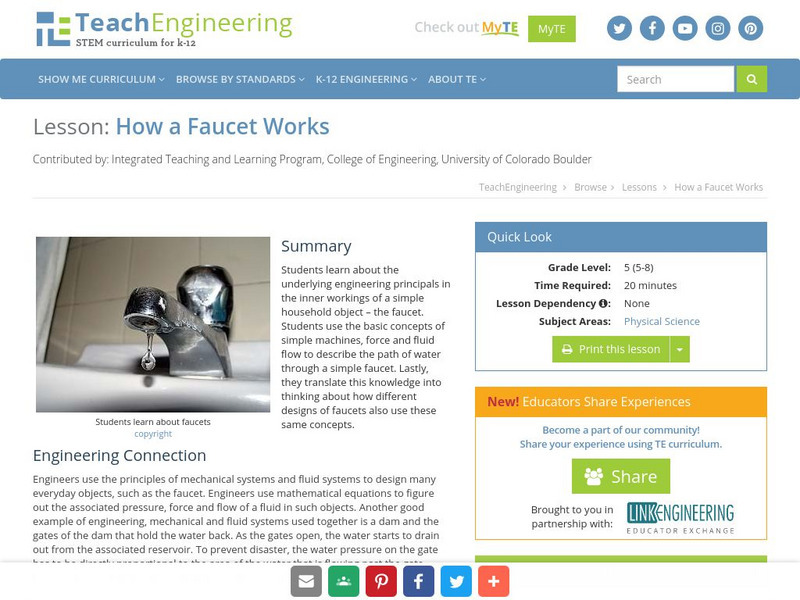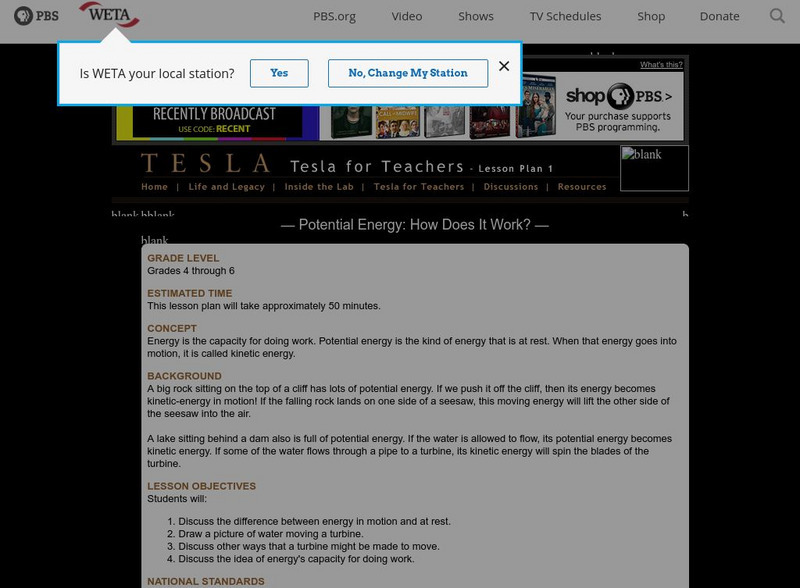TeachEngineering
Teach Engineering: Under Pressure
Students learn about Pascal's law, an important concept behind the engineering of dam and lock systems, such as the one that Thirsty County wants Splash Engineering to design for the Birdseye River (an ongoing hypothetical engineering...
TeachEngineering
Teach Engineering: Floaters and Sinkers
Through this curricular unit, students are introduced to the important concept of density. The focus is on the more easily understood densities of solids, but students may also explore the densities of liquids and gases. Students devise...
TeachEngineering
Teach Engineering: Locks and Dams
Students are introduced to the structure, function and purpose of locks and dams, which involves an introduction to Pascal's law, water pressure and gravity.
TeachEngineering
Teach Engineering: What Floats Your Boat?
Students use modeling clay, a material that is denser than water and thus ordinarily sinks in water, to discover the principle of buoyancy. They begin by designing and building boats out of clay that will float in water, and then refine...
Science Bob Pflugfelder
Science Bob: Make a Cartesian Diver!
This site presents a procedure for creating a cartesian diver, a miniature submarine which rises or sinks depending upon the water pressure within a closed bottle. The site also introduces basic concepts of water and air pressure.
TeachEngineering
Teach Engineering: Too Much Pressure!
In this activity, students learn how engineers design faucets. Students will learn about water pressure by building a simple system to model faucets and test the relationship between pressure, area and force. This is a great outdoor...
TeachEngineering
Teach Engineering: How a Faucet Works
Learners learn about the underlying engineering principals in the inner workings of a simple household object - the faucet. Students use the basic concepts of simple machines, force and fluid flow to describe the path of water through a...
CK-12 Foundation
Ck 12: Physical Science: Oceanic Pressure
[Free Registration/Login may be required to access all resource tools.] Oceanic pressure and how it changes with depth, and how to adjust to this change.
PBS
Pbs Teachers: Potential Energy: How Does It Work?
Describe the difference between energy in motion and at rest, and demonstrate energy's capacity for doing work. Draw a picture of water moving a turbine, and discuss other ways that a turbine might be made to move.
Physics Aviary
Physics Aviary: Super Soaker Lab
In this lab environment, look at how the pressure behind a stream of water affects the speed with which the water moves as it leaves a nozzle.
PBS
Pbs Teachers: Bottle Fountain Experiment
Demonstrate how heating expands air molecules by constructing a bottle fountain powered by air pressure.
PBS
Pbs Teachers: Build a Model Dam
Discover the unique engineering properties of a dam by contructing a model dam using popsicle sticks, pebbles and sand.












